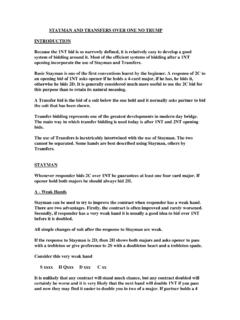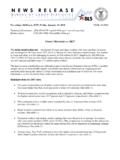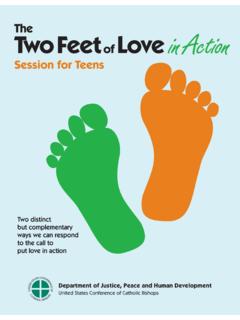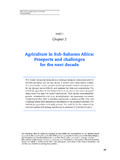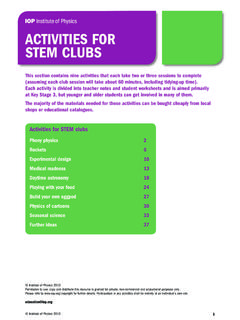Transcription of Force, Mass, and Demolition Derby
1 Science Enhanced Scope and Sequence Grade 4 virginia department of education 2012 1 force , mass , and Demolition Derby Strand force , Motion, and Energy Topic Investigating motion Primary SOL The student will investigate and understand characteristics and interactions of moving objects. Key concepts include b) changes in motion are related to force and mass . Related SOL The student will demonstrate an understanding of scientific reasoning, logic, and the nature of science by planning and conducting investigations in which a) distinctions are made among observations, conclusions, inferences, and predictions; c) appropriate instruments are selected and used to measure length, mass , volume, and temperature in metric units; e) predictions and inferences are made, and conclusions are drawn based on data from a variety of sources.
2 I) data are collected, recorded, analyzed, and displayed using bar and basic line graphs; j) numerical data that are contradictory or unusual in experimental results are recognized; k) data are communicated with simple graphs, pictures, written statements, and numbers; l) models are constructed to clarify explanations, demonstrate relationships, and solve needs. The student will investigate and understand characteristics and interactions of moving objects. Key concepts include a) motion is described by an object s direction and speed; c) friction is a force that opposes motion; d) moving objects have kinetic energy.
3 Background Information A force is a push or pull that causes an object to move, stop, or change speed or direction. The greater the force , the greater the change in motion. The more massive an object, the less effect the same force will have on the object. There are many examples in daily life that demonstrate the relationship of force and mass with changes in motion. For example, most children could predict what would happen if a large football player and a small football player ran straight at each other at the same speed.
4 The collision would send the smaller player backward while the larger player would continue to move forward. Students usually understand that the more massive object will cause a change in motion of the less massive object. Another example is how much more difficult it is to pick up a car than it is to pick up a paperclip. The car, due to its greater mass , requires much more force to move. Science Enhanced Scope and Sequence Grade 4 virginia department of education 2012 2 Materials For each student: Copies of attached Smash, Crash, Motion Packet Half sheet of construction paper For each small group.
5 2 toy cars Balance with gram weights Toy car track pieces (straight) 2 meter sticks Books Small amount of tape Vocabulary meter stick, mass , motion, transfer of energy, force , friction, independent variable, dependent variable, constant Student/Teacher Actions (what students and teachers should be doing to facilitate learning) Introduction 1. Begin the lesson by showing a video about, or discussing, spacewalking. What are some of the experiences astronauts have that relate to force and/or the absence of it when walking in space?
6 Have students discuss why an astronaut would float away in space. Students should keep in mind that in space, without matter and air, friction does not exist. Discuss what would happen if you threw a baseball or if someone spun you around in space. 2. Students should come to understand that only another force could change their direction or stop them from spinning. 3. Let students know that today they will learn how force and mass relate to motion. Procedure 1. Place students into groups of three or four students based on ability level.
7 2. Distribute materials for each group and the Smash, Crash, Motion Packet to each student according to the high leveled group or the medium and low leveled group. The packets are labeled accordingly. 3. Go over the Smash, Crash, Motion activities with the students. Be sure to discuss with the students the vocabulary terms independent variable, dependent variable and constant when describing the tests. 4. Students should work in their groups to complete the tests. 5. The teacher should pay close attention to the fairness of the tests.
8 Many students make the mistake of making the tests competitive while trying to push the cars instead of merely releasing. It is important that children see unusual results in data and try to explain why these results may have occurred. 6. Throughout the experiment students will discuss data. The conclusion section of Smash, Crash, Motion can be completed as a class or as a group. The students should Science Enhanced Scope and Sequence Grade 4 virginia department of education 2012 3 be encouraged to use words and phrases such as force , mass , friction, transfer of energy, motion, independent variable, dependent variable, and constant.
9 Conclusion 1. Discuss with students how the experiments illustrate how changes in motion are related to force and mass . 2. Ask students to draw and label a picture on the half sheet of construction paper illustrating the same relationships that were evident in the experiment. 3. Have them write a paragraph explaining what is happening using scientific vocabulary. Assessment Questions o How does mass affect motion? o In what ways can force affect motion? Journal/writing prompts o Imagine playing your favorite sport in space.
10 Explain the difficulties with this idea. o You are designing a Bumper Car ride for your own amusement park. You want to be able to bump cars harder than everyone else every time you are on the ride. What could you do while you are designing the ride to assure that you will be the hardest hitter? Explain. Other o Give students a KWL Chart (listed in Differentiation Strategies) and evaluate the L section. o Grade the paragraph on their experiment. Extensions and Connections (for all students) Complete another test adding more mass and/or more height to the ramp.














